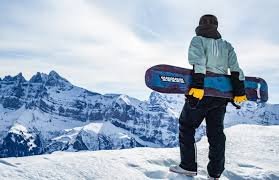
k2 skis
K2 Skis stands as one of the most recognized and pioneering ski equipment brands in the world. Founded in 1962 on Vashon Island, Washington, the company emerged during a period when skiing was gaining momentum as both a competitive sport and a recreational activity. Unlike traditional European manufacturers, K2 brought an American spirit of innovation, experimentation, and adventure to ski design. The company’s use of advanced materials, creative marketing, and commitment to expanding the possibilities of skiing helped revolutionize the industry. Over the decades, K2 has become synonymous with performance, durability, and freedom on the slopes, appealing to professionals and beginners alike.
Early History and Foundation
The origins of K2 Skis are rooted in the entrepreneurial spirit of brothers Bill and Don Kirschner. In the early 1960s, most skis were made from wood, which limited performance and consistency. Bill, who worked with fiberglass manufacturing, saw an opportunity to adapt this material to skis. The result was one of the first fiberglass skis ever produced, which was lighter, more durable, and more flexible than traditional wooden skis. This breakthrough positioned K2 as a revolutionary company from its inception. Their skis quickly gained attention for their performance advantages, and within a few years, K2 had grown from a small experimental workshop to a respected name in the American ski market.
Growth and Market Expansion
Throughout the 1970s and 1980s, K2 capitalized on its reputation for innovation and began expanding internationally. The brand was among the first American ski companies to compete with European giants such as Rossignol, Atomic, and Fischer. By embracing bold graphic designs, celebrity athlete endorsements, and a commitment to producing skis that performed in diverse conditions, K2 established a loyal following. The company was also known for its playful marketing campaigns, which set it apart from the traditional, performance-only image of European ski brands. This approach not only captured the attention of serious skiers but also resonated with younger generations who viewed skiing as a lifestyle rather than just a sport.
Technological Innovations
One of the defining features of K2 Skis has been its consistent focus on technological advancement. Early adoption of fiberglass set the tone, but the company continued to push boundaries. They introduced torsion box constructions, which improved edge grip and control, and they experimented with new shapes that catered to different skiing styles. In the 1990s, K2 was at the forefront of the freestyle skiing movement, producing skis that allowed athletes to perform tricks, jumps, and stunts with greater ease. Later, the company embraced the rise of rocker technology, which improved flotation in powder and versatility across terrains. These innovations ensured that K2 remained not only relevant but also trendsetting in the industry.
The Rise of Freestyle and Freeride Skiing
While many traditional ski brands focused heavily on racing, K2 leaned into the emerging freestyle and freeride movements. This strategic decision aligned with changing cultural attitudes, as younger skiers sought adventure in parks, halfpipes, and off-piste terrain rather than on formal racecourses. K2 sponsored athletes who became icons in these movements, helping to popularize skiing as an extreme sport alongside snowboarding. This shift in focus solidified the brand’s reputation as youthful, progressive, and attuned to the evolving desires of the skiing community.
Expanding Product Line
Over time, K2 Skis diversified beyond alpine skis. The brand began producing snowboards, ski boots, helmets, and accessories, creating a full suite of winter sports equipment. This expansion allowed the company to serve skiers and snowboarders of all skill levels, from children trying their first slopes to Olympic athletes. K2’s snowboards, introduced in the late 1980s, also became highly regarded, further strengthening the company’s market presence. By broadening its offerings, K2 established itself as more than just a ski manufacturer—it became a complete lifestyle brand for mountain sports.
Cultural Influence and Marketing Strategy
A hallmark of K2’s success has been its ability to connect with culture, not just sport. Through eye-catching graphics, athlete-driven marketing, and sponsorship of major ski events, K2 built a strong emotional connection with its audience. Unlike traditional brands that marketed primarily on technical specifications, K2 embraced humor, creativity, and lifestyle imagery. Their iconic advertisements and ski graphics from the 1970s and 1980s are still remembered as some of the boldest in the industry. By treating skiing as an expression of freedom and individuality, K2 captured the imagination of both serious athletes and recreational enthusiasts.
Challenges and Industry Shifts
Like many long-standing companies, K2 faced challenges as the ski industry evolved. Competition grew intense as European brands maintained strongholds and new manufacturers entered the market. Economic downturns, changes in consumer behavior, and shifts in skiing participation rates created obstacles. Additionally, the consolidation of ski companies into larger corporations reshaped the competitive landscape. K2 itself changed ownership multiple times, moving from Vashon Island to Seattle and eventually under the umbrella of larger sporting goods groups. Despite these changes, the company managed to retain its core identity and continue innovating.
Sustainability and Modern Era
In recent decades, sustainability has become a central focus for K2. Recognizing the impact of climate change on winter sports, the company has taken steps to adopt environmentally friendly practices. Initiatives such as reducing waste in manufacturing, using recycled materials, and improving energy efficiency in production facilities highlight the company’s commitment to protecting the mountain environments that sustain the sport. Modern K2 skis continue to embody a balance between high performance and environmental responsibility, reflecting the brand’s adaptation to contemporary consumer values. For more details on sustainability in the skiing industry, readers can explore this overview.
Global Presence and Community Building
Today, K2 Skis enjoys a global presence, with products sold in North America, Europe, Asia, and beyond. The company actively invests in community building, sponsoring ski teams, grassroots events, and educational programs for young skiers. Their support of athletes extends from world-class competitors to emerging talents, reflecting their belief in fostering the next generation of skiing pioneers. By maintaining this strong connection to the skiing community, K2 not only sells products but also reinforces its identity as a brand deeply embedded in the culture of winter sports.
Legacy and Impact on Skiing
The legacy of K2 Skis is not only measured in sales or technological achievements but also in its influence on the culture of skiing itself. By breaking away from rigid traditions and embracing fun, freedom, and creativity, K2 redefined what skiing could mean for millions of people. The brand encouraged skiers to view the mountain as a playground rather than just a racetrack, helping to inspire entire generations of freeriders, freestylers, and recreational skiers. K2’s blend of innovation, culture, and lifestyle has made it one of the most enduring names in winter sports.
Conclusion
K2 Skis represents far more than a manufacturer of ski equipment. It is a symbol of American innovation, cultural relevance, and adventurous spirit in the global ski industry. From its pioneering use of fiberglass to its embrace of freestyle culture, K2 has consistently pushed the boundaries of what skiing can be. Despite challenges and changes in ownership, the brand has remained resilient, maintaining its reputation for quality and creativity. As climate change, shifting demographics, and new technologies continue to reshape winter sports, K2 is poised to adapt while preserving the adventurous essence that has defined it since 1962. Whether on groomed slopes, backcountry powder, or freestyle parks, K2 continues to inspire skiers to see the mountain as an open canvas of possibility. For additional information about the company’s history and modern developments, readers can visit this resource.






